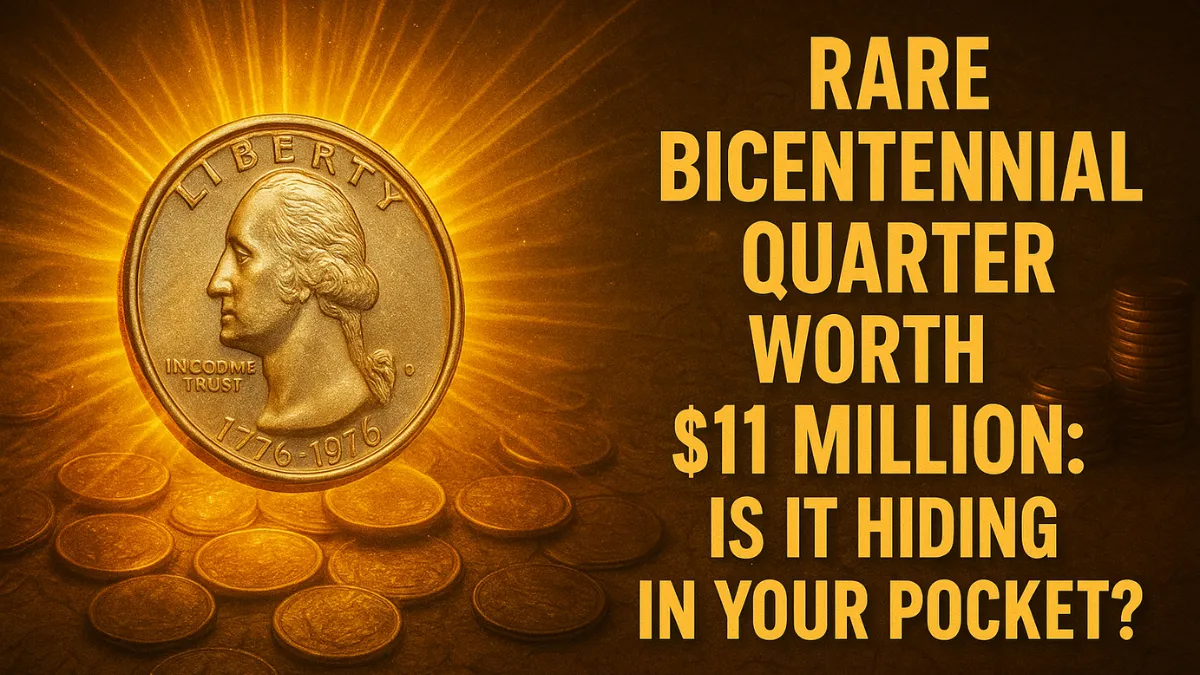The idea that loose change could transform your life is captivating—especially when stories of ultra-rare coins fetching extraordinary sums make headlines. Among them, the famed “Bicentennial Quarter” from 1976 stands out for its unique history, patriotic design, and the lure of jaw-dropping auction prices. But is there really a Bicentennial Quarter worth $11 million, and could one be hiding in your pocket? Let’s separate fact from fiction and help you discover what to look for in your change.
The Bicentennial Quarter: An American Icon
In 1976, to celebrate the United States’ 200th birthday, the U.S. Mint issued a special quarter featuring a drummer boy and a torch encircled by thirteen stars—a bold departure from the traditional eagle motif. These coins were minted in massive numbers, making them a staple of pocket change for decades. Most 1976 quarters are only worth face value, but rare exceptions have achieved legendary status among collectors.
Why Some Bicentennial Quarters Are Valuable
Not all Bicentennial quarters command fortune. The vast majority of these coins—struck in copper-nickel clad—remain common. However, a few special versions and rare minting errors can be exceptionally valuable:
- Silver Proof and Silver Uncirculated Versions:
Some quarters were minted in 40% silver for collectors, marked by an “S” mintmark and sold in special sets. These silver quarters hold modest premiums, usually ranging from $5–$20. - Rare Errors and Unique Varieties:
The Holy Grail of Bicentennial quarters is the error coin—a piece with significant mistakes (e.g., double strikes, off-metal compositions, or proof errors). Flawless condition, low mintage, and unique features (such as a coin struck on the wrong metal) can make a coin exponentially more valuable.
The $11 Million Claim: Fact or Myth?
Some headlines and viral reports claim that a rare Bicentennial quarter sold for $11 million. In reality, no publicly documented sale of a quarter has reached that astronomical figure. The most valuable U.S. quarters—including unique or extremely rare specimens—have reached high six-figure or low seven-figure sums at major auctions, but $11 million is almost certainly a myth or misunderstanding. The origin of this number may be confusion with other multimillion-dollar coins or exaggerated speculation in online forums.
However, it is true that exceptionally rare varieties, especially coins with certified minting errors or precious-metal content, have sold for thousands or even hundreds of thousands of dollars—a reminder that treasure sometimes hides in the ordinary.
How to Tell If Your Bicentennial Quarter Is Valuable
Here’s a step-by-step guide for identifying coins with potential value:
- Check the Mint Mark:
- Circulation coins usually have “D” (Denver), “S” (San Francisco), or no mint mark (Philadelphia).
- “S” mintmark coins (especially proof or silver issues) can be worth more.
- Look for Errors:
- Misstrikes, double dies, or off-metal strikes are valuable. Professional grading is necessary to authenticate these features.
- Test for Silver:
- Genuine 40% silver quarters weigh slightly more and have a distinctive sound when dropped.
- Edge should be mostly silver in color, unlike the copper-nickel clad variety.
- Coin Condition Matters:
- Coins in uncirculated or proof condition bring higher value. Scratches, wear, or tarnishing reduce collector interest.
- Get an Expert Evaluation:
- If you suspect your coin is rare or valuable, consult a reputable coin dealer or a grading service such as PCGS or NGC.
Takeaway: Does Your Change Hold a Hidden Treasure?
While the story of an $11 million Bicentennial quarter may be a myth, the reality is still exciting: rare errors, unusual varieties, and high-grade examples of these historic coins can be worth hundreds, thousands, or more. Carefully check your coins for silver content, mintmark, errors, and condition—and if you’re in doubt, seek help from an expert. While you may not become a multimillionaire overnight, you might still find a valuable piece of American history in your pocket.
